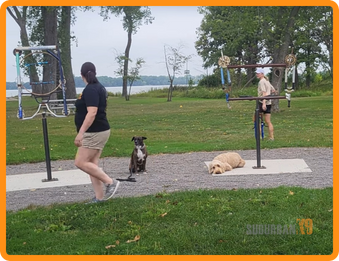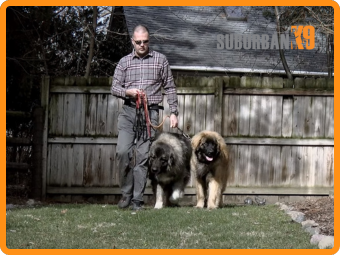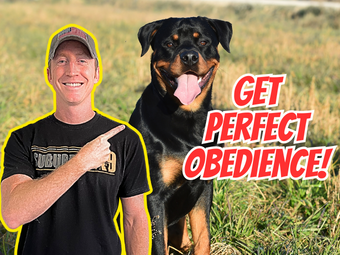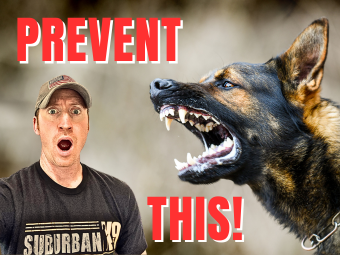Introduction to Balanced Dog Training
What is Balanced Dog Training?
Balanced dog training is a method that combines positive reinforcement with corrective measures to shape a dog's behavior. This approach emphasizes rewarding good behavior while addressing undesirable actions through fair and humane corrections. It aims to create a well-rounded and well-behaved pet by using a mix of training techniques tailored to individual dogs' needs.
Is balance training good for dogs?
Balanced dog training is excellent for dogs because it offers a comprehensive approach to behavior modification. This method not only teaches commands but also addresses unwanted behaviors through a mix of positive reinforcement and fair corrections. Unlike other methods that may leave gaps in training, balanced training ensures a well-rounded, obedient, and happy dog. It fosters clear communication and builds trust between the dog and owner, creating a harmonious and respectful relationship. This approach's flexibility and effectiveness make it an ideal choice for achieving lasting results.
The Philosophy Behind Balanced Dog Training
The philosophy of balanced dog training is grounded in the belief that dogs thrive on clear communication and consistent guidance. It acknowledges that while positive reinforcement is crucial, some behaviors may require gentle corrections. This method seeks to balance rewards and corrections to foster a trusting and respectful relationship between the dog and the owner.
Key Principles of Balanced Dog Training
Balanced Dog Training vs Positive Reinforcement
Balanced dog training incorporates positive reinforcement, rewarding desired behaviors to encourage repetition. However, when many people refer to "positive reinforcement," they often mean "purely positive reinforcement," which involves no steps to tell a dog "no" or correct unwanted behavior. In contrast, balanced training combines rewards with humane corrections, offering a more complete approach. This method not only teaches good behavior but also effectively addresses and modifies unwanted behaviors. By using both rewards and corrections, balanced training ensures a well-behaved and well-adjusted dog, filling the gaps left by purely positive methods.
Positive Reinforcement Techniques
Positive reinforcement involves rewarding your dog for desired behaviors to encourage repetition. Treats, praise, and playtime are common rewards. This technique is essential in balanced training as it motivates dogs to learn and comply with commands happily and willingly.
Corrective Measures and Their Role
Corrective measures are used to address and discourage unwanted behaviors. These corrections are humane and aim to interrupt the behavior without causing fear or harm. Methods include leash corrections, verbal cues, and redirecting the dog's attention to appropriate behaviors.
Importance of Consistency and Timing
Consistency and timing are critical in balanced dog training. Consistently applying commands and corrections helps dogs understand expectations, while timely rewards and corrections ensure clear communication. This consistency builds a reliable and predictable environment for the dog, enhancing learning and behavior modification.
Benefits of Balanced Dog Training
Improved Communication with Your Dog
Balanced dog training enhances communication between you and your dog. By using clear signals, rewards, and corrections, your dog learns to understand your expectations, leading to better behavior and a stronger bond.
Building Trust and Respect
Trust and respect are fundamental outcomes of balanced dog training. When your dog knows that good behavior is rewarded and corrections are fair, they develop a sense of security and respect for you and will begin to instinctually respond to your commands.
Addressing Behavioral Issues Effectively
Balanced dog training is effective in addressing various behavioral issues. Whether it's aggression, anxiety, or excessive barking, this approach provides tools to correct and manage these problems, leading to a more harmonious relationship with your pet.
Is Balanced Dog Training the Best Way to Train my Dog?
Balanced dog training is considered one of the best ways to train your dog due to its comprehensive approach. By combining positive reinforcement with humane corrections, it effectively teaches desired behaviors while addressing and modifying unwanted actions. This method ensures a well-rounded, obedient dog and fosters clear communication and trust between you and your pet.
Tools Used in Balanced Dog Training
Training Collars
A responsive collar; Martingales, Training Collars or E-Collars, are essential tools in balanced dog training. They help safely manage and control your dog during training sessions, ensuring that corrections are applied appropriately and safely.
Leashes and Long Lines
Leashes and long lines are used to maintain control over your dog while giving them the freedom to explore and learn. These tools are crucial for teaching recall and other essential commands in various environments.
Praise and Treats
Praise and treats are fundamental in positive reinforcement. Suburban K9 prefers clients use vocal and physical praise provide a consistent and precise signal to mark desired behaviors and reward them. Doing so will reinforcing the behavior effectively. Treats great to get dogs attention, but tend to get them very excited so they may not retain as well. We use treats with very young puppies that need the extra focus, or more fearful dogs that need help breaking out of their shell.
Steps to Implement Balanced Dog Training
Establishing Basic Commands
Begin with basic commands such as sit, stay, down, and come. Use positive reinforcement to reward your dog when they perform the command you’re trying to teach them, but do not introduce corrections until the dog has proved to you that they understand the command you are asking of them! This would be unfair to the dog, and where most people go wrong when correcting their dogs.
Integrating Corrections
Integrate corrections by continuing to reward good behavior and then adding your correction if the dog does not follow through. This balanced approach helps your dog understand which behaviors are acceptable, promoting quicker learning and adherence to commands.
Advanced Training Techniques
Advanced training techniques build on basic commands and introduce more complex behaviors. Techniques such as off-leash training, agility, and scent work challenge your dog mentally and physically, enhancing their overall obedience and skills.
Common Misconceptions About Balanced Dog Training
Myth: Balanced Training is Harsh
One common misconception is that balanced training is harsh. In reality, it focuses on humane and fair corrections that are appropriate for the behavior. The goal is not to punish, but to effectively communicate with the dog. Suburban K9’s corrections are designed to be as intuitive and similar to canine to canine communication as possible. This approach reduces your dog's chance of stress or fear: the last thing you want when training!
Myth: Positive Reinforcement Alone is Sufficient
Another myth is that positive reinforcement alone is sufficient for all dogs. While positive reinforcement is essential, some behaviors may require the addition of corrective measures to ensure safety and proper behavior modification.
Myth: Balanced Training is Only for Problematic Dogs
Balanced training is often believed to be only for problematic dogs. However, it is suitable for all dogs, regardless of their behavior. It provides a comprehensive approach to training that benefits any dog, promoting well-rounded and balanced behavior. That being said, not every correction is right for every dog. When using corrections you need to ensure that you do not do anything to cause fear in your dog. On the contrary, corrections should just be enough to get the dogs attention and understand they made the wrong choice.
Success Stories and Case Studies
Real-Life Examples of Balanced Dog Training Success
Real-life examples highlight the success of balanced dog training. Stories of dogs overcoming behavioral issues and thriving under this training approach demonstrate its effectiveness and positive impact on dog-owner relationships.
Testimonials from Happy Dog Owners
Testimonials from happy dog owners further validate the success of balanced dog training. Owners share their experiences of improved behavior, stronger bonds, and overall satisfaction with the results, encouraging others to consider this training method. Take a look at Suburban K9’s Testimonials!
Finding a Balanced Dog Trainer
Qualities to Look For in a Trainer
When searching for a balanced dog trainer, look for qualities such as experience, patience, and a humane approach to corrections. A good trainer should prioritize the well-being of the dog and use a mix of techniques tailored to individual needs.
Questions to Ask Potential Trainers
Ask potential trainers questions about their methods, experience, and success stories. Inquire about their approach to corrections and rewards to ensure they align with balanced training principles and your expectations.
Certification and Experience
Certification and experience are important factors when choosing a balanced dog trainer. Look for trainers with certifications from reputable organizations such as the AKC and a proven track record of successful training outcomes. Founded in 2006, Suburban K9 has grown from one trainer in Chicagoland to over 40 trainers in over 14 locations across the United States with a proven track record of success.
Is there balanced dog training near me?
If you're searching for balanced dog training near you, look no further than Suburban K9. Suburban K9's tailored approach addresses both desirable and undesirable behaviors, fostering a well-behaved and happy dog. By choosing Suburban K9, you'll benefit from their expertise, dedication, and proven training methods, ensuring the best results for your furry friend. Use our Instant Price Quote to find our if we service your area!
What are Balanced dog Training Prices?
Balanced dog training prices can vary depending on factors such as location, the trainer's experience, and the specific needs of your dog. Typically, sessions can range from $75 to $300 per hour. Some trainers may offer package deals, reducing the cost per session if multiple sessions are purchased upfront. Additionally, group classes are usually more affordable than private sessions. Suburban K9 offers competitive pricing for their balanced dog training services, providing excellent value for their comprehensive and effective approach. Click below for an Instant and Free Quote for all of the services that Suburban K9 provides.
DIY Balanced Dog Training Tips
Setting Up a Training Schedule
Set up a consistent training schedule to establish a routine. Short, regular sessions are more effective than long, sporadic ones, keeping your dog engaged and focused.
Handling Common Challenges
Common challenges in dog training include distractions, stubbornness, and fear. Address these by remaining patient, using positive reinforcement, and gradually introducing corrections as needed.
Keeping Training Sessions Fun and Engaging
Keep training sessions fun and engaging by incorporating games, varied activities, and regular breaks. A positive training environment motivates your dog and makes learning enjoyable for both of you.
Different Types of Dog Training
What is the Difference Between Force Free and Balanced Dog Training?
Force-free and balanced dog training differ significantly in their approaches. Force-free training relies exclusively on positive reinforcement, avoiding any corrections or aversive techniques. This method emphasizes rewarding desired behaviors to encourage repetition but often lacks strategies for effectively addressing and modifying unwanted behaviors.
In contrast, balanced dog training combines positive reinforcement with humane corrections. While it rewards good behavior to promote learning, it also incorporates gentle corrections to discourage undesirable actions. This comprehensive approach ensures a more well-rounded and obedient dog, addressing gaps that force-free training might leave. Balanced training fosters clear communication and trust, providing a complete solution for behavior modification.
What is the Difference Between Positive Training and Balanced Training?
Positive training and Force Free training are almost interchangeable terms. Positive training, more accurately called purely positive training, relies solely on rewarding desired behaviors to encourage repetition. This method avoids any form of correction, focusing exclusively on positive reinforcement techniques such as treats, praise, and play.
In contrast, balanced training utilizes positive reinforcement alongside humane corrections. While it rewards good behavior to promote learning, it also includes gentle, fair corrections to address and modify unwanted behaviors. This comprehensive approach ensures a well-rounded and obedient dog, effectively filling the gaps that purely positive training might leave. By incorporating both rewards and corrections, balanced training provides a more complete and effective solution for behavior modification, fostering clear communication and trust between the dog and owner.
FREQUENTLY ASKED QUESTIONS
Start balanced dog training at any age, but early training, from puppyhood, is ideal. Early training sets a strong foundation for future behavior and learning.
Yes, any dog can benefit from balanced training. This approach is versatile and can be tailored to suit the needs of different breeds, ages, and temperaments.
The time to see results varies depending on the dog's temperament and the consistency of training. Generally, with regular practice, noticeable improvements can be seen within a few weeks.
No. Balanced dog training is not bad; in fact, it is a highly effective method for many dogs. This approach combines positive reinforcement with humane corrections, providing a comprehensive training solution.











